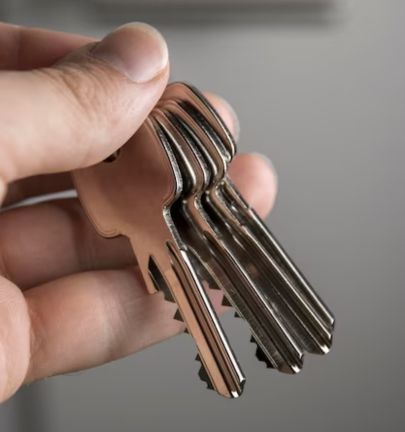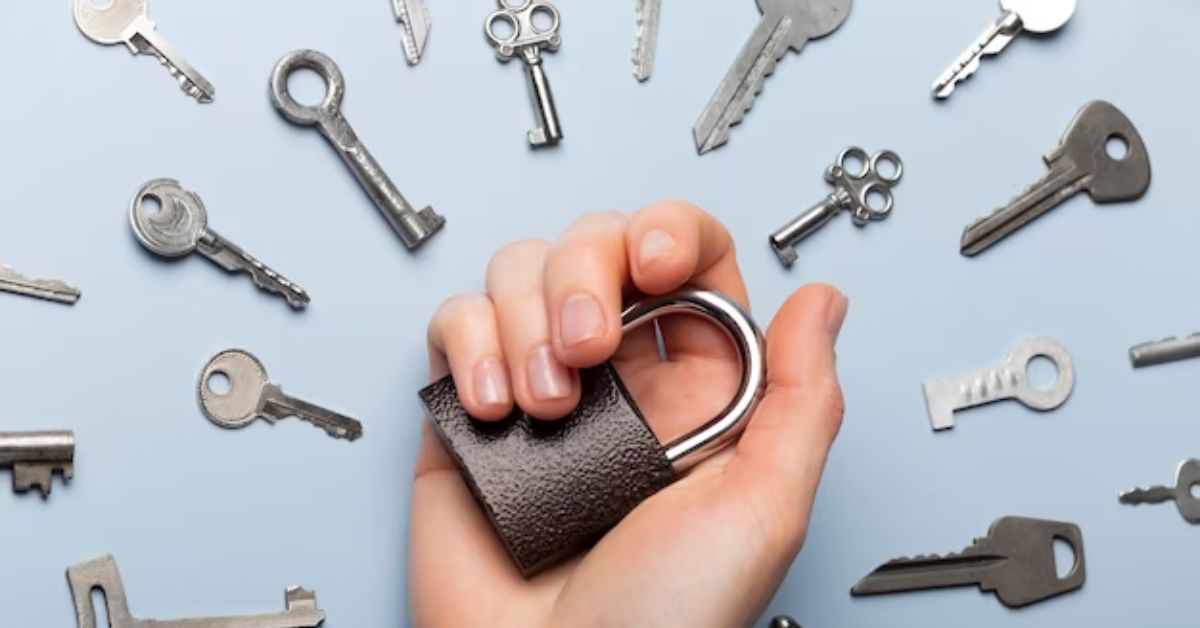Lock bumping is a lock picking technique used by specialized locksmiths to unlock the door when you get locked out of your residence or office or misplace the traditional keys. This technique can help open most of the cylindrical locks when used correctly. If you need to bump the lock, you may avail expert residential locksmith services for instant assistance.
But, beware! If you are here to find an answer to – what is lock bumping, you must also be aware of a massive security threat associated with it. Although this technique has been used for many years, it is also being constantly misused by criminals or thieves to gain forced access into someone’s property. Thus, along with using this technique for your benefit, you need to be cautious too.
This insightful blog aims to make you conversant with all the crucial aspects related to lock bumping and its functioning. You will also learn how to prevent it from happening to you and much more.
Go on! Read it all about the bump lock procedures.
How to Bump a Lock?
The technique of lock bumping is used to manipulate the pins inside pin tumbler locks, which are most commonly installed in residential properties, apartments, and official spaces. A pin tumbler lock contains pins of different lengths that prevent the lock from turning until they are raised at the shear line. So, when you insert a key that is cut properly into that lock, the peaks and valleys of the key get aligned with the pins. This makes them reach the shear line and cause the lock to turn.
The bump key is cut in such a way that the peaks and valleys are fitted at the maximum depth, and this enables the manipulation of pins.
Therefore, the bump locking key is a specially crafted key that is used for this purpose. The bump key’s mechanism is such that it enables unlocking the door by temporarily causing the pins to jump when the key is put into the lock and struck with a hammer or other such object.
It may be highlighted that you may not be able to bump the lock in just a single attempt. There could be several attempts required to align the pins inside the lock. If you are not able to do it successfully even after repeated attempts then it means the grooves (filed in the valleys) do not have the right length. Else, it could also be that you need to turn the deadbolt in the opposite direction. You can try by taking out the key and inserting it again.
How to Make a Lock Bumping Key?
Demanding attention to every minute detail, making a bump key is undoubtedly a delicate process. It needs to be made with patience, as it’s not just a one-time process. You may have to get it done perfectly after several trials. You need a blank key that exactly matches the type of lock you wish to bump.
Then start by filing down all the peaks on the key until they reach the maximum depth. This is just to make sure that the key slides in and out of the lock without any complications.
Then you can take a smaller file or sandpaper to create slight variations in the depths of the valleys on the key. These variations will cause the pins to jump when the bump key is struck.
You can consult professional locksmiths, avail their services, and seek guidance for the same. They will also assist you by checking the overall lock systems installed at your home or office and suggest a customized solution to strengthen security.
Lock Bumping Key Set
It is true that a bump key can be made for a specific lock. However, expert locksmiths often use a lock bumping key set that consists of a variety of pre-cut bump keys. Well, this is exactly what is furtively done by criminals or burglars. These sets usually come with bump keys for different lock manufacturers and models. This makes it easier to gain access to a wide range of locks.
Apart from this, there are various tools and techniques that can be used to enhance the effectiveness of lock bumping. These include:

- Using lubricants to reduce friction
- Applying tension to the lock at the time of bumping
- Using bump hammers or mallets to strike the key with necessary force
What are the Signs of Lock Bumping?
Since no or negligible proof is left, it could be really challenging to check or verify whether a lock has been bumped. Nevertheless, you can make use of certain signs that may indicate that a lock has been tampered with or someone tried to make a forced entry.
One such indication could be that if the lock appears to have been picked but you don’t find any signs of damage or scratches around the keyhole. Another clue is that if the lock can be easily turned with a regular key or when you insert the key, you believe that it feels loose inside.
In case of a doubt that your lock has been bumped, you are recommended to contact a professional emergency locksmith to analyze the situation and provide you with effective solutions to enhance security.
How Do You Prevent Lock Bumping?
Here are some of the steps you can take to protect yourself from bump the lock:
- Upgrading your locks to high-security solutions is one of the major ways, as it would be hard to bump them. These locks consist of additional security pins, specialized keyways, and other anti-bumping mechanisms. This makes it extremely difficult to manipulate them. In fact, you will find that nowadays, a number of established lock manufacturers are engaged in producing bump-resistant locks. There are small markings near the keyhole in these unique locks. It becomes close to impossible for thieves or burglars to bump them. Especially, when it’s about a business organization, you must opt for commercial grade locks.
- Some of these locks also contain a bolt with a ball bearing extension. It locks into the receiver of the frame of your door.
- Another crucial measure is to install a deadbolt lock alongside your standard lock. This is because deadbolts are usually more resistant to bumping owing to their design features.
- You must install high-tech security systems such as cameras or alarms so as to provide an extra layer of protection. This helps to inform the relevant authorities about the illegal access done by burglars and they can take prompt action.
If you find the lock of your official building in a damaged condition or you feel that it has been tampered with, you need immediate assistance in augmenting the security by upgrading the locks. Thus, you must contact a professional commercial locksmith urgently to ensure the safety of your property.
Concluding Thoughts
Lock bumping is an art that is both useful if used legally and harmful if used illegally. Professional locksmiths use this technique to help you regain access to your residential or commercial property. However, you must be mindful of the increasing crime rate as thefts have become common. Thus, criminals also misuse this technique to invade your personal or professional space.
Thus, make sure to understand how lock bumping works, the tools and techniques involved, and the indications to be checked. This will be instrumental in building a protection cover for you. Stay vigilant and take all the necessary preventive measures to tighten the security. You can minimize the probability of falling victim to this secretively used method by upgrading your locks, installing deadbolts, and implementing security systems. This is indeed useful in securing you and your property 24X7, thereby ensuring peace of mind. Especially, when it’s about securing high-profile government organizations, research labs, development centers etc., implementing foolproof security measures becomes utmost necessary.
FAQs on Bump the Lock
You can quickly go through the answers to some of the most commonly raised questions related to lock bumping. Help yourself by staying informed, and make a smart move towards security.
Bumping a lock means to open a lock using a bump key, which is a specially designed key. It is inserted inside the lock and its pins may jump temporarily above the shear line. This method is used by professional locksmiths to let you regain access to your home or office if you get locked out or misplace the keys. However, be careful as this technique is now also being increasingly used by burglars to gain forced entry in your personal or professional space.
No, you can use bump keys on the usual pin tumbler locks. Some high-security locks may also be opened through this technique.
Upgrading your locks to high-security solutions, choosing bump-resistant and commercial grade locks, using locks with a bolt and a ball bearing extension, installing a deadbolt lock alongside your standard lock, and installing high-tech security systems such as cameras or alarms for additional protection are some of the suitable ways to prevent yourself from lock bumping.
This technique is used by professional locksmiths to open locks in case you get locked out or lose the traditional keys. It is also used by burglars to get forced entry for illegal purposes. But the technique does not cause any damage to the lock. Even criminal attempts have not been found to be leaving any visual evidence that might have appeared due to damage.
Yes, lock bumping can be done using almost any key. If you wish to make a bump key on your own, take a key that is not a part of your regular use, and try it out in some cylindrical locks. This will reveal whether the key fits properly. If not, it can be filed as per the required specifications.
It is a tool that is used to strike the bump key so that it starts working. The hammer is usually heavily headed and does not cause any damage to your locks.






